- News
- Reviews
- Bikes
- Accessories
- Accessories - misc
- Computer mounts
- Bags
- Bar ends
- Bike bags & cases
- Bottle cages
- Bottles
- Cameras
- Car racks
- Child seats
- Computers
- Glasses
- GPS units
- Helmets
- Lights - front
- Lights - rear
- Lights - sets
- Locks
- Mirrors
- Mudguards
- Racks
- Pumps & CO2 inflators
- Puncture kits
- Reflectives
- Smart watches
- Stands and racks
- Trailers
- Clothing
- Components
- Bar tape & grips
- Bottom brackets
- Brake & gear cables
- Brake & STI levers
- Brake pads & spares
- Brakes
- Cassettes & freewheels
- Chains
- Chainsets & chainrings
- Derailleurs - front
- Derailleurs - rear
- Forks
- Gear levers & shifters
- Groupsets
- Handlebars & extensions
- Headsets
- Hubs
- Inner tubes
- Pedals
- Quick releases & skewers
- Saddles
- Seatposts
- Stems
- Wheels
- Tyres
- Health, fitness and nutrition
- Tools and workshop
- Miscellaneous
- Tubeless valves
- Buyers Guides
- Features
- Forum
- Recommends
- Podcast
news
“Is it April already?” Internet baffled by “eye-watering” new bike saddle; Government “shamefully slow” on dangerous junctions for cyclists; King’s Speech a “missed opportunity”; 25-year doping ban for DS; Bike racks or skatepark? + more on the live blog
SUMMARY
 saddlespur on bike
saddlespur on bike07 November 2023, 15:24
“Is it April already?” We take an in-depth look at the new, ahem, interesting SaddleSpur bike seat… and everyone on social media is baffled
Remember the SaddleSpur? The “innovative” saddle featured on last week’s blog, which promises to “provide natural support for your lower back”, allowing you to “achieve more power and performance with less strain”?
Well, this afternoon we’ve taken an in-depth look into the new bike seat’s, ahem, intriguing design – focusing, of course, on that prominent “spur” reaching for the heavens at the back – which its founders claim will hasten “the next evolution in bike saddles”, while researchers at Anglia Ruskin University believe it may have the “potential to reshape the cycling industry” (among a few others things too…).
> The SaddleSpur with a patented backrest redefines cycling comfort, performance and efficiency, claims its creators
Anyway, I think it’s safe to say that the general response to the groundbreaking design is one of confusion and bewilderment (mixed with a lot of Always Sunny in Philadelphia references – look it up yourself), as quite a few of you rushed to your calendars to check the date…
Me: "I am going to be a mature, responsible, hardworking adult today."#CyclingTwitter: "Not today, you're not."
🤣🤣🤣🤣🤣🤣🤣 https://t.co/C7kNSOYE5p
— Lady Starblade (@ladystarblade) November 7, 2023
Not if you time it wrong, it doesn’t! 😳
— Ben Atkins (@benatkins_uk) November 7, 2023
is it April 1st?
— Mike Butcher (@prestonmike) November 7, 2023
— FUBAR (@JohnPre68901963) November 7, 2023
It looks like a forgetful mind may end up with a visit to A&E, after sitting down heavily on the saddle after a long climb....
— Size Of A Chaffinch (@TheMVP) November 7, 2023
Even former EF Education-EasyPost rider Alex Howes joined in on the fun:
Yeah… It’s for your back. https://t.co/pr2uL2zeJP
— Alex Howes (@alex_howes) November 7, 2023
https://t.co/rlGI8spHCZ pic.twitter.com/dURExw3AEr
— LVT Stan account 🏗🚊🚴♂️🔰🇺🇦🇦🇲🇹🇼 (@blueliberal1) November 7, 2023
Can’t wait for the first cyclocross rider to turn up on one of these…
07 November 2023, 16:38

“Not just the price that is eye-watering”: More reaction to the world’s most unusual saddle
I feel that SaddleSpur’s unique creation may well prove to be the gift that keeps on giving, judging by the reaction to it so far on social media.
So while you all continue sniggering at the back of the class, here are a few more of my favourite takes on cycling’s first ever NSFW saddle…
A&E nurse: "And how exactly did this happen?"
Patient: "I just got out of the saddle for a few pedal strokes, when I unexpectedly hit a speed bump"
— Matt Southerden (@mattsoutherden) November 7, 2023
Not just the price that is eye-watering
— ɢʀᴀʏ (@onetakegray) November 7, 2023
— John Hannon (@john_hannon) November 7, 2023
I just couldn’t get through the day’s live blog without mentioning Mac from Always Sunny (again, look it up yourself).
It’s not all jokes, however – one Twitter user said the saddle had inspired them to “get into riding bikes again”… Oh wait, I get it now.
“Brings a whole new meaning to saddle sores,” said another. Indeed.
Is it just me? https://t.co/P7EgobhkpM
— Real Gaz on a proper bike: gazza_d [at] toot.bike (@gazza_d) November 7, 2023
No, it’s definitely not just you, Gaz.
Right, that’s enough now – time for everyone to get back to their homework…
07 November 2023, 15:57
“Can you please ask your driver what the hell they think they are playing at here and perhaps give them some better training before they kill somebody?”
07 November 2023, 09:07

Is this London’s most dangerous junction for cyclists? London Cycling Campaign maps out the notorious junctions “that most need fixing” across the capital – and accuses authorities of being “shamefully slow and partial in dealing with key road danger”
While sometimes we can become fixated on segregated cycle lanes in towns and cities (or the lack thereof), the junctions that connect even the most protected of these routes can often provide the biggest source of danger for people on bikes.
This morning, the London Cycling Campaign – which in 2022 launched its ‘Dangerous Junctions’ campaign, following the deaths of Dr Marta Krawiec and Shatha Ali at Holborn – unveiled a new interactive map of the most dangerous junctions across the capital, which shows “exactly how and where” cyclists and pedestrians are being hurt, and killed, on London’s roads.
By highlighting the plethora of dangerous, ill-conceived junctions for cyclists and pedestrians across London, designed “primarily for motor traffic capacity”, the campaign group has also urged mayor Sadiq Khan, London’s local authorities, and Transport for London – which it accuses of being “shamefully slow and partial in dealing with this key road danger” – to “be bolder and fix these dangerous junctions to avoid needless, predictable deaths”.
The map, which was developed by LCC volunteer Daniel Hills, uses publicly available collision reports from across London over the past five years to “cluster” them by location, allowing users to view this data at up to 100 junctions which are filterable by borough, allowing you to find the most dangerous junction in your area.
“By identifying these junction systems, weighting data according to both collision severity and recency, and factoring in multi-victim collisions, we have identified the junctions that most need fixing across every London borough,” the group says.
So what, I hear you cry, is London’s most dangerous junction for cyclists?
Well, according to the map, the most hazardous cluster of junctions in the capital is on Upper Tooting Road in south west London, where a number of streets intersect with the wand-protected CS7 bike lane. Around 3,000 cycling journeys are made there daily, but the side streets are frequently used as rat runs by motorists, creating (as you can see in this story’s main image) a range of obstacles for people on bikes.
In the past five years, there have been 11 serious cycling injuries on the road, and 18 minor ones – though LCC has noted that both the council and TfL have done nothing to make those junctions safer.
Behind Upper Tooting Road on the list are Lambeth Road and Kennington Road (where there has been one fatality, and two serious and five slight collisions since 2018), Wandsworth Road and North Street (one fatality, three serious, seven slight), Mitcham Road and Leighton Street (one fatal, two serious), and Finsbury Park and Blackstock Road (one fatal, one serious, eight slight).
Two of Holborn’s notoriously unsafe junctions – where nine cyclists have been killed in total since 2008 – also made the top ten.
> Council green-lights safety changes to London's lethal Holborn gyratory
Meanwhile, the most dangerous junction in London for pedestrians is at Southall High Street and Avenue Road junction, where two fatal collisions and two ‘slight’ collisions have occurred in the past five years, and where a rat run “meets a congested shopping street with high footfall and restricted sightlines”.
“Behind this horrific data are hundreds of stories of families torn apart by tragedy and lives changed forever,” LCC’s chief executive Tom Fyans said in a statement.
> Safety work approved to improve "most dangerous junction in London" for cyclists
Fyans also argued that Sadiq Khan’s ‘Safer Junctions’ programme is “moving too slowly and its designs are too weak – leaving in ‘critical issues’ (by its own assessment) at too many junctions”.
He continued: “The Mayor has committed to a ‘Vision Zero’ for London by 2041 – but that would mean over 17 years more fatal and serious collisions for Londoners – we need to be faster and bolder.
“Whilst cycling and indeed walking and wheeling remain relatively safe, healthy ways of getting about London, TfL, the Mayor and our boroughs must move faster and be bolder on road danger to stem the human cost posed by dangerous junctions and poor road designs.”
07 November 2023, 14:59
Turbo time
As someone who enjoyed a lovely crisp, sunny, autumnal spin yesterday, nothing beats being out on the road.
But, as the nights draw in and the days get colder and wetter, many of us (including myself) will spend at least some part of our winter reaching for the trusty turbo.
But if you’re still not sold on indoor riding, we decided to put together a list of factors outlining how turbo training can give you a fast and focused fitness boost when you just can’t get out on the road, while also being (almost) enjoyable.
We did say almost…
> The benefits of indoor cycling and how it can deliver effective, efficient fitness results
07 November 2023, 14:14
Portuguese sports director slapped with 25-year doping ban
Over in the parallel universe of Portuguese cycling – the wild west character of which harks back to the dark EPO-infused days of the 1990s and 2000s – former W52-FC Poro sports director Nuno Ribeiro has been handed a mammoth 25-year ban for doping offences, which will see him sidelined from the sport until December 2047.
46-year-old Ribeiro, a former pro who won the Volta a Portugal twice during his career (though his second title, in 2009, was stripped from him following an EPO positive), received the ban for “trafficking, possession, and supply” of illegal substances, including testosterone, cortisone, and steroids.
Ribeiro’s lengthy ban – one of the longest ever dished out in cycling – comes a year after one of his former soigneurs and associate DSs at W52-FC Porto, Jose Rodriguez, received an equally long ban, which is the maximum possible under Portugal’s anti-doping legislation.
Affiliated to the famous football club, W52-FC Porto dominated its home grand tour throughout the 2010s, but ultimately collapsed in 2022 following a massive anti-doping investigation, called ‘Clean Test’, which saw seven of the Continental squad’s riders – including three Volta a Portugal winners – receive bans ranging from three to seven years.
The year before, two-time Volta winner and Porto rider Raúl Alarcón was also banned for four years and stripped of his results, including a Vuelta Asturias win from 2017.
During the build-up to the 2022 Volta a Portugal, the director of the Portuguese Anti-Doping Authority revealed he was living under police surveillance after receiving a shotgun cartridge in the post, along with several other threats. Meanwhile, riders on three other teams were subject to police raids two days before the race started.
The wild west indeed.
07 November 2023, 13:40
Check out this month’s 10 road.cc Recommends additions from Canyon, Giant, Smith, DJI, and more
Feast your eyes this lunchtime on some of the bling, kit, books, and earphones we’ve reviewed over the past month…
> This month’s 10 road.cc Recommends additions from Canyon, Giant, Smith, DJI, and more
07 November 2023, 13:10

Australian champion Luke Plapp breaks contract with Ineos to join Jayco AlUla
In what will surely come as a blow to a team aiming to rebuild around a core of exciting young talent, one of those most exciting prospects, Australian champion Luke Plapp, has broken his contract with the Ineos Grenadiers to sign for his home team, Jayco-AlUla.
The 22-year-old turned pro with Ineos in 2022 and enjoyed a successful first season in the WorldTour, finishing ninth at the Tour de Romandie and third at the Tour of Norway before making his grand tour debut at the Vuelta a España.
However, despite another Aussie champs win and an encouraging second on GC at the UAE Tour in February, 2023 turned out to be rather more subdued for Plapp. And after missing out on selection for any of the grand tours, Plapp agreed by mutual consent to rip up his contract with Ineos, which was set to run until the end of 2024, to sign for Jayco on a four-year deal.
“It honestly does feel like I’m coming home, I’m such a proud Australian and to now be able to ride for the Australian team, it’s a real honour. I just can’t wait to get started; the next four years are going to be amazing on this team,” Plapp said in a statement.
And of course, a Jayco-AlUla transfer announcement wouldn’t be complete without a stereotypically Aussie video, featuring a slouch hat and shorts-wearing Plapp chopping a log, cracking open a cold tinnie, and saying G’day…
🇦🇺 𝙉𝘼𝙈𝙀 𝙏𝙃𝙀 𝙈𝙊𝙎𝙏 𝘼𝙐𝙎𝙏𝙍𝘼𝙇𝙄𝘼𝙉 𝙏𝙃𝙄𝙉𝙂 𝙔𝙊𝙐 𝘾𝘼𝙉 𝙏𝙃𝙄𝙉𝙆 𝙊𝙁... 🤔
MORE DETAILS ➡️ https://t.co/ImT29XQQ5s pic.twitter.com/5we9lUDH4n
— Team Jayco AlUla (@GreenEDGEteam) November 7, 2023
You’re welcome.
07 November 2023, 12:32
“This was not a King’s Speech laying out legislation that will ‘continue to lead action on tackling climate change’”: Cycling UK rue “completely missed opportunity” – and calls on driverless vehicle laws to “focus on protecting, not undermining” safety
The countdown to the next general election has well and truly started, as King Charles delivered his first King’s Speech today, setting out Rishi Sunak’s rapidly fading plan to cling to power ahead of a likely 2024 vote.
And it’s clear that, for a government intent on setting its stall against the ‘green agenda’, Sunak’s proposed legislation – apparently made “in the interests of future generations” – will not please too many cycling or active travel advocates, though the Prime Minister did steer clear of doubling down on his recent pro-car policies and plans to combat the so-called “war on the motorist”.
In fact, the only nod towards that anti-active travel direction came with a new promise to make councils add any new speed limits, road closures, or parking restrictions to a central database.
> Rishi Sunak is “on the side” of drivers – What happened to Britain’s “golden age for cycling”?
Nevertheless, plans to introduce legislation on driverless vehicles and proposals to boost the UK’s oil and gas industry – as well as the absence of anything approaching active travel – in today’s King’s Speech have been roundly criticised by Cycling UK.
“This was not a King’s Speech laying out legislation that will ‘continue to lead action on tackling climate change’,” Sarah McMonagle, the charity’s director of external affairs, said today.
“Faced with the triple whammy of climate, cost of living and a health crisis, today was an opportunity for the government to set out a plan to improve people’s options regarding how they travel locally, without always having to rely on their car. Sadly, this opportunity was completely missed.”
The King’s Speech also laid out plans to introduce legislation on self-driving vehicles, with buses, grocery delivery vans, and farm machinery all potentially set to be operating autonomously by 2030.
Responding to the Automated Vehicle Bill, McMonagle said it “is vital any new legislation for driverless vehicles has a clear focus on protecting, and not undermining, the safety of people who are walking or cycling.
“Currently driverless vehicles are not ready to mix safely with people walking or cycling. With the right regulation in place, driverless vehicles have the potential to improve road safety and the environment, whereas done badly they could put lives at risk.”
07 November 2023, 11:58
Marks Reunited (Again): Renshaw joins Cavendish at Astana as sports director
His short-lived spell as a “sprint and lead-out consultant” for Astana at this year’s Tour de France may have passed by with little more than a whimper (and the sight of his old mate Cav in the back of a medical car), but former lead-out supremo Mark Renshaw will be back next July to try to finish the job, as the Kazakh team announced this morning that the Australian will be joining them as a sports director in 2024.
Renshaw, who piloted Cavendish to 23 of his 34 Tour wins, and lots of other victories besides, for High Road, Quick Step, and Dimension Data, provided tactical advice for Astana’s fledgling but ill-fated lead-out train at the 2023 Tour, and was roundly praised by the team’s riders and staff for his input and experience, despite his old teammate’s early injury-enforced exit.
And with the Manx Missile confirming last month that he plans to return to the Tour next year to target that record-breaking 35th stage win, Astana boss Alexandr Vinokourov has swooped to ensure that Renshaw remains apart of the backroom staff hoping to make history for cycling’s greatest sprinter.
> “Just one more year”: Mark Cavendish to continue racing in 2024 and target Tour de France record
“I am very excited to be taking on a Director Sportif role with Astana Qazaqstan for the upcoming 2024 season,” the 40-year-old said in a statement.
“After working on the Tour de France alongside the staff and riders at Team Astana Qazaqstan I knew that I have more to give professional cycling. With the support of my amazing family, to get back into elite sport I believe I can help lead our talented riders to victories in some of the biggest and best races on the calendar.
“I need to thank Alexandr Vinokourov for giving me this opportunity to pass on my experience to the team. We have some huge objectives ahead of us in 2024 and I can't wait to work on achieving these goals with the team.”
Ah, I can already feel the anticipation for No. 35 building…
07 November 2023, 11:29
Study reveals US cycling fans are as stressed watching a race as they are when doing DIY
What’s your plan for this weekend? Will you be watching the third round of the cyclocross World Cup in Dendermonde, or are you finally going to get round to putting up that shelf in the spare room?
Well, according to The Gruelling Truth, both of those very different activities will result in the same amount of stress for the average cycling fan.
A new study from the American website, which surveyed 1,249 sport fans from across the United States, has ranked cycling eighth in the list of the most stressful sports to watch as a fan (though baseball, which is really just glorified rounders, topped the list, so you can take it with a pinch of salt, I suppose).
Apparently, US cycling fans rank the stress of watching a big bike race an average of 4.9 out of ten, just below soccer on 5.5 (these people are clearly not Manchester United or Spurs fans, then).
Interestingly, cycling fans scored completing a DIY task five out of ten in the stress stakes – which means that putting together that desk ranks right alongside watching Tom Pidcock descend an Alpine pass when it comes to raising your heart rate.
Meanwhile, taking an exam (6.7), attending a work meeting (6.3), and speaking in public (6.7) were all deemed more stressful than watching the cycling on the telly. Although, apparently long commutes scored lower (4.4) – so evidently these people aren’t commuting on their bikes in the UK, then…
07 November 2023, 10:59
“Which genius thought it a good idea to have a post in the middle of a cycle lane?” More baffling bike lanes
Cyclists and residents in one south London borough have questioned, quite understandably, why a new cycle lane has a utilities pole smack bang in the middle of it.
The post – which has been located on the bike lane on Orpington’s Croft Road since the adjacent road was widened in a bid to reduce congestion – has been described by one astute resident as a “complete balls-up” and been reported to the council on several occasions, with another local calling for the lane to be closed on safety grounds until it is removed.
Read more: > Locals baffled by “accident waiting to happen” bike lane
07 November 2023, 10:32
Yeah, that Kittel was a great sprinter alright, but can he do it on a cold November evening at Carlisle Cathedral?
So, it turns out that anything Marcel Kittel can do on a worryingly shiny gym floor at a Japanese school, Timmy Mallett is equally capable of pulling off through the middle of a Cumbrian cathedral – as the UK’s most colourful cyclo-tourist made a typically flamboyant entrance at one of his evening talk and book signing events in Carlisle last night…
Thanks for lovely evening @CarlisleCath @SPCKPublishing
Utterly Brilliant My Life's Journey pic.twitter.com/adxzvAm0AK— Timmy Mallett (@TimmyMallett) November 7, 2023
Now that’s what I call bike handling skills.
07 November 2023, 10:09
Trip hazard, skate park, or just a dreadful bike rack design?
In-ground bike racks pic.twitter.com/HN2c5G87de
— OriginCycling (@OriginCycling) November 6, 2023
I highly doubt this particular “in-ground” bike rack design will ever come to fruition, owing to its clear inability to store, you know, an actual, functioning bike, with gears, in real life. And that’s before we even start asking where the lock would go…
But if they somehow miraculously did appear on our streets, tripping pedestrians up for sport, I think our fiercely fought ‘Worst bike rack in the world’ competition could finally be put to bed, once and for all.
Though at least the skateboarders would love them…
After obtaining a PhD, lecturing, and hosting a history podcast at Queen’s University Belfast, Ryan joined road.cc in December 2021 and since then has kept the site’s readers and listeners informed and enthralled (well at least occasionally) on news, the live blog, and the road.cc Podcast. After boarding a wrong bus at the world championships and ruining a good pair of jeans at the cyclocross, he now serves as road.cc’s senior news writer. Before his foray into cycling journalism, he wallowed in the equally pitiless world of academia, where he wrote a book about Victorian politics and droned on about cycling and bikes to classes of bored students (while taking every chance he could get to talk about cycling in print or on the radio). He can be found riding his bike very slowly around the narrow, scenic country lanes of Co. Down.
Latest Comments
- mitsky 22 sec ago
I'm certain that is not a new incident with CM as I remember a similar recognition ("Oh my god thats CyclingMikey!") one a while ago but I can't...
- chrisonabike 1 hour 6 min ago
They may be held up because - according to the Evening Standard - some of their electronic components are now being diverted to build drones? (No...
- OldRidgeback 1 hour 31 min ago
Building the new tunnel has been a necessity. The congestion levels on the Blackwall Tunnel were not sustainable. I agree that there should be...
- chrisonabike 2 hours 10 min ago
RE: War on motorists - Excellent! In my neck of the woods probably needs more bollards, sadly...
- chrisonabike 2 hours 12 min ago
I generally agree (although it's obviously about a lot more than road safety - we can use that though), and I'm more critical of "we have to get...
- SimoninSpalding 2 hours 23 min ago
Exactly this. My employer holds some registered marks (both trade and certification), and if we don't act if a business misuses our marks then we...
- David9694 3 hours 18 min ago
True, and we're all here for it.
- Jaijai 5 hours 10 min ago
Point being it's a garden ,converted into parking .It was never intended to be that .I know it would irritate me having that parked up 9/10 months...
- Geordiepeddeler 6 hours 52 min ago
PS there are more that don't. Ever been knocked off your bike before?
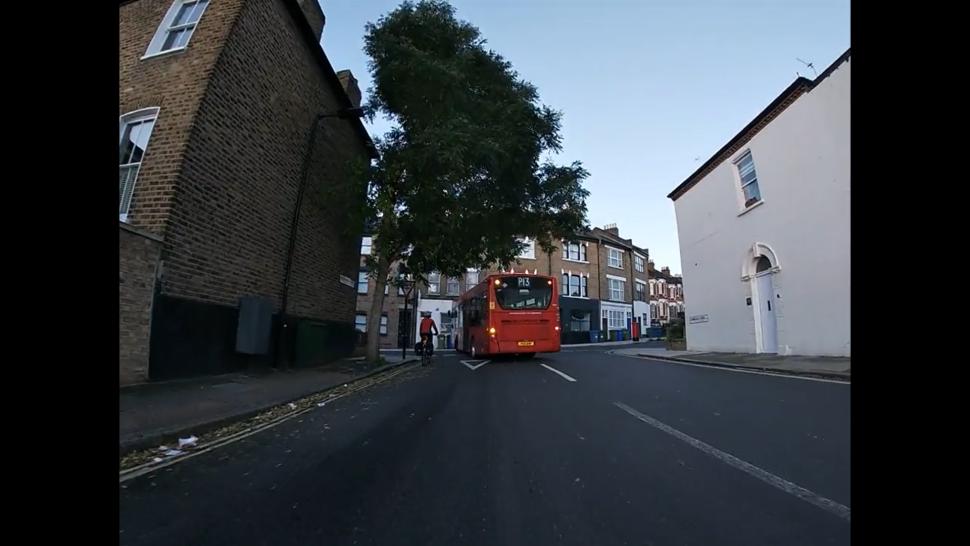
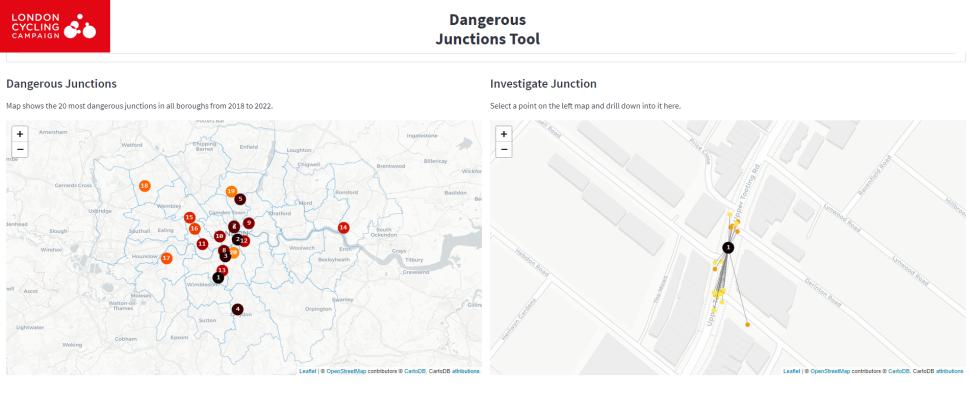
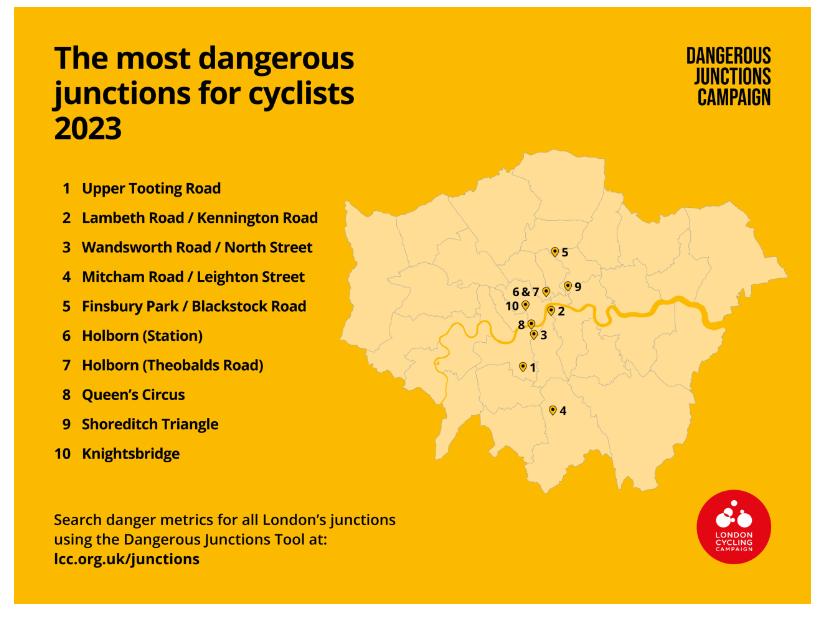
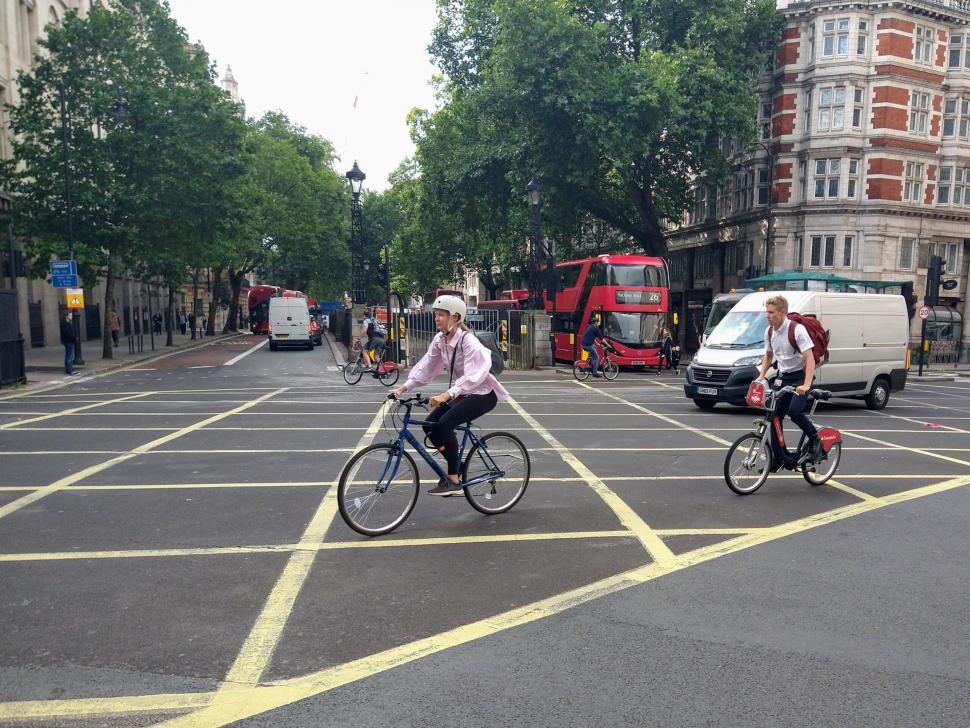



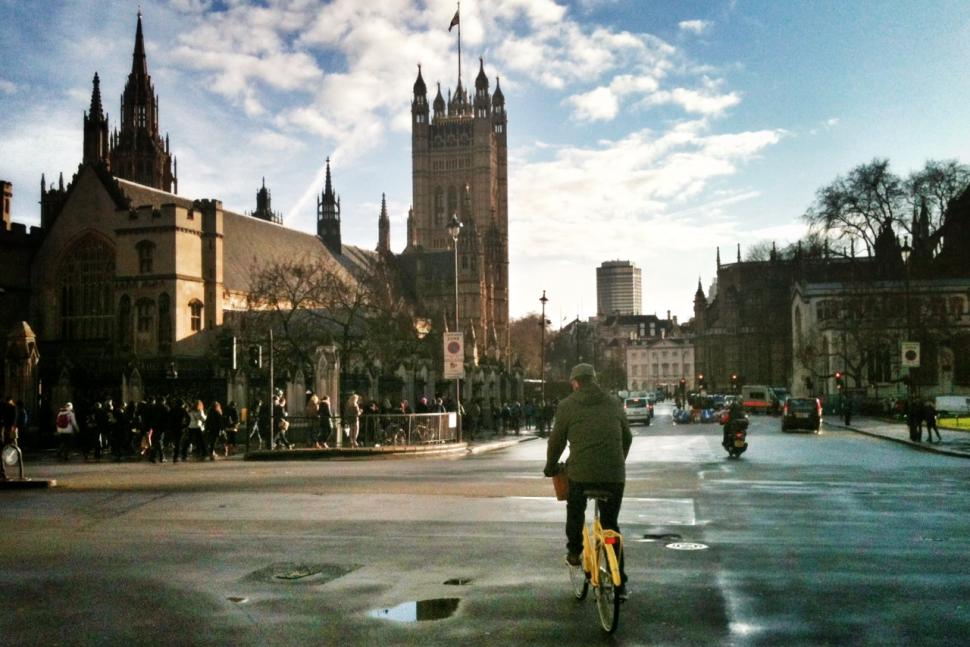



Add new comment
11 comments
Has April the first moved? Two horrendous, impractical, downright dangerous designs on the same day: something is going on.
That SaddleSpur seat is just like the saddle on my old Chopper! (I wonder if I can adapt it for my road bike and saver some money??)
But seriously, how does a normal person mount a bike with a saddle like that??
I've lost track of the number of government set piece occasions I have written statements about (for my job) calling them a "missed opportunity".
But the good news about today's speech is that there was nothing on the War on Motorists in it - so no banning LTNs, 20 mph zones etc. There are times when not going backwards is a victory.
CS7 through Tooting is as bad a pice of cycling infrastructure as it gets, particulalrly southbound. At least there are now some stats to add heft to the argument to improve it. On a winter evening in the rain it's beyond appalling. Thursday nights are particularly bad for some reason. I was always pleased to reach the relative safety of Tooting Broadway Sainsbury's. Did it for years - no more now, thank heavens. The retrofit wands added to the blue stripe made a bvot of a difference, but why they decided to place them in the cycle lane rather than on the white line baffles me - in that position they're just anothr handlebar-grabbing hazard for cyclists. It would also help if they were clean and refective, and opposed to filthy and broken, but 'cycling infrastructure' and 'maintenance' seem to be mutually exclusive terms. Not so much a Venn diagram, as two very small and separate circles....
Proposed bike share scheme study from 2012 in Denmark.
https://scarlettjy.wordpress.com/2013/05/07/case-study-new-bike-share-sy...
So I take it to be a storage spot to be used for dockless hire cycles.
In reality designed by a monomaniacal wazzock, probably mainlining Tramadol at the time.
I am quite proud to see UK cycling twitter shouting about trip hazards for pedestrians.
In case anyone forgot about the "Tour Du Danger" (tour of London's 10 most dangerous junctions) back in 2011:
https://ibikelondon.blogspot.com/2011/11/we-did-it-tour-du-danger.html
https://www.youtube.com/watch?v=SSC7JVNT2rM
Wouldn't call myself a Timmy Mallett fan, but credit where credit is due. I'd be all over the place navigating that aisle.
I took one look at those "in ground" bike racks and thought I was back in my teenage years on magic mushrooms... Or the designer was when they drew it out.
I can understand it as some kind of concept design, but clearly the designer hasn't ever tried to lock up a bike.
When I first looked I thought I couldnt see anything wrong, actually a good design, locking your bike to a bike rack that looked like a bike. Then it dawns on me that no, those bikes weren't the rack, just representing real bikes using the rack.
so actually could be made to work
That's what I thought too - that the bikes were artistic representations of actual bicycles but in reality were the racks that you could lock a real bike to. Missed a trick there I think!